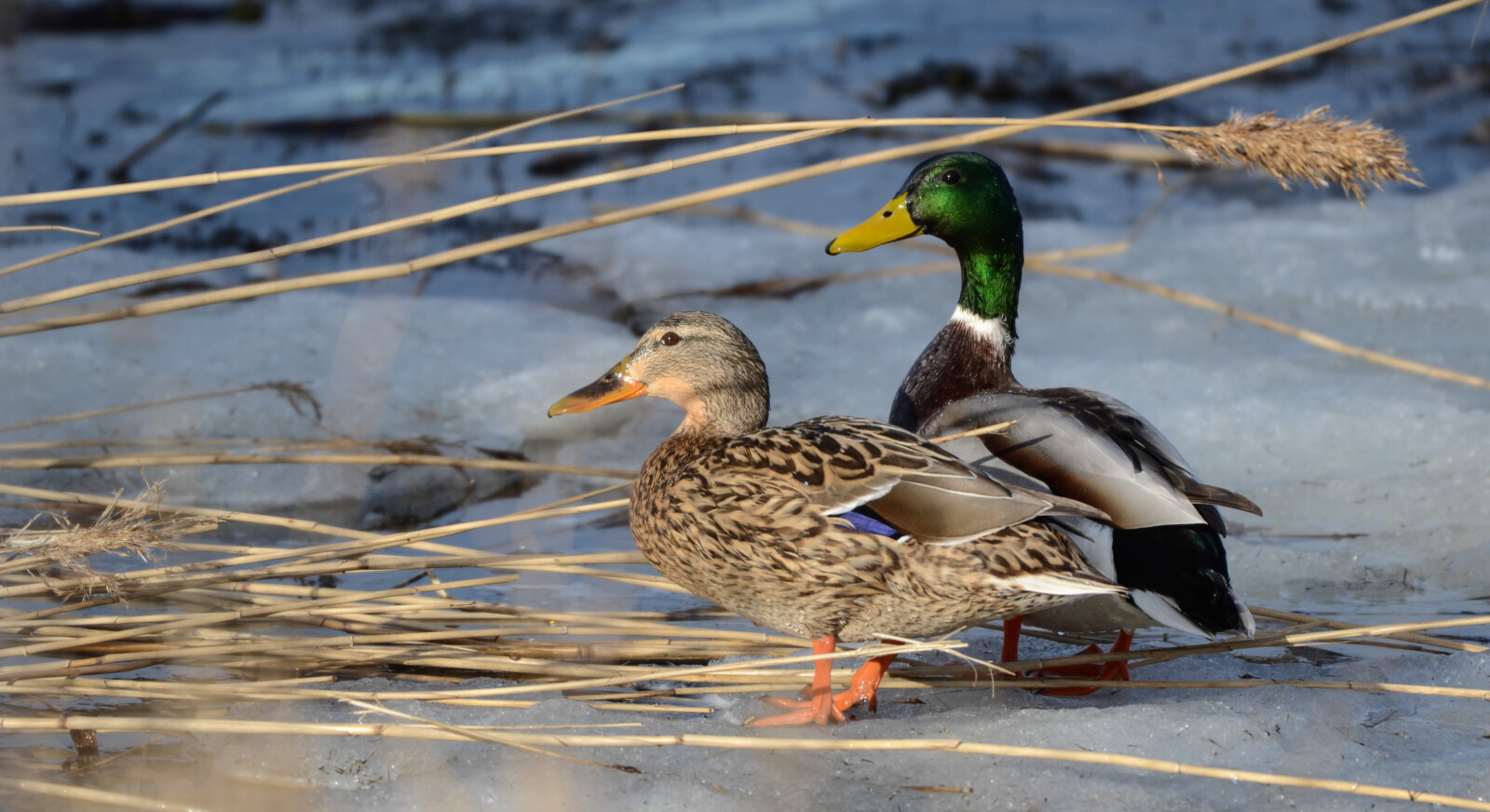Mallard
- Mallard
- https://linnuriik.ee/wp-content/uploads/2021/09/Sinikael-part__Sander-Sirelbu-1024x558.jpg
- Keemu linnud
- https://linnuriik.ee/wp-content/uploads/2021/09/Sinikael-part_salvestusVRunnel.mp3
Mallard. Photo: Sander Sirelbu
Introduction
Latin Anas platyrhynchos L.
Estonian Sinikael-part
Also known as: wild duck
Status in Estonia
Breeding, migratory and wintering bird.
Description
The mallard is a big and upright standing duck. The head and beak are big and the tail is short. The wings are blunt and broad, the legs are orange and the secondaries are deep blue with a white edge. A male bird’s definitive plumage includes a metallic green head, short white collar, purplish brown breast, black under-tail and a dull yellow beak. The rest of the body is pale grey, the middle tail feathers are curled up. The female bird is brown and striped, with a darker crown and eye stripe, a lighter brow stripe, an orange beak, a blackish back and creamy white tail feathers. The male bird in eclipse plumage resembles the female bird, but the beak is uniformly yellow, the breast is orange with a subtle pattern, the outermost tail feathers are white and the head is dark.
Size
Body length 50–60 cm, wingspan 81–95 cm, body mass 0.9–1.3 kg.
Similar species
Other Anatidae.
Distribution
The mallard is widespread almost in the entire world. It can be found throughout Europe, Asia, Africa, North and South America and Oceania. It is a very common widespread breeding bird in Estonia.
Population
Estonia has 40,000–60,000 breeding pairs.
Occurrence in Estonia
It arrives in March, though sometimes as early as February. Arrival times vary greatly from year to year. The autumn migration begins in August and lasts until the water bodies freeze over. Many (16,000–21,000) winter in Estonia.
Diet
It is an omnivore. It eats aquatic plant foliage, seeds and roots, grain seeds, aquatic insects, crustaceans and molluscs.
Habitat
It lives in all kinds of water bodies. It breeds on our small islands and coasts as well as near lakes, rivers, ponds, quarry water bodies, raised bog lakes and so on, regardless of whether the body of water is in a settlement or is isolated by large forested areas. It also inhabits the edges of forests and city parks.
Nesting
The nest is normally built in a sheltered location on the ground, but it can sometimes be higher, like an abandoned crow’s nest. In April, the female lays 8–11 eggs, which she incubates for 22–30 days. The male leaves when the female begins to incubate and goes to moult with other males. After the chicks hatch, the mother leads them to a body of water and they won’t return to the nest. The chicks are reasonably independent from the start, although they remain under the mother’s care for 50–60 days, until they learn to fly.
Conservation status and protection
Not under protection. The main threats are water pollution and predators. One of the most important gamebirds.
Distribution and population in Lääne County
The mallard is a very common breeding and migratory bird in Lääne County. It can be found in woodland ditches and wet hay fields, although the most common habitat is shallow inland bays.
In Matsalu National Park, mallard ducks can be found wherever there is even a small body of water.
